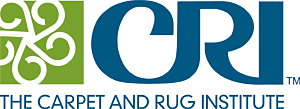New Standard Assures Sustainability in Carpets
Specification Considerations
In specifying carpets with sustainable attributes, the choices can be overwhelming. Incorporating sustainability into carpet manufacturing is a complex undertaking that goes well beyond just utilizing recycled content. In addition to established recovery programs that keep carpets out of landfills, companies may claim a variety of product attributes from durability to long-lasting carpet tiles, recycled elements, low- or no-VOC adhesives or methods that even obviate the need for adhesives altogether. Manufacturers may even claim to reduce their products' life-cycle impacts through emissions reductions, maximizing the use of renewable energy sources or reducing waste and toxins. While all of these impacts should be considered in specifying carpets, valid product comparisons can be difficult and time consuming.
In specifying carpets, third party assurances that attest to a product's environmental quality performance can help narrow the search. But caveat emptor, some third-party assurances carry more weight than others.
Ecolabels
An ecolabel is a labeling system for consumer products that are made in a fashion so as to avoid detrimental effects on the environment. Ecolabels help guide consumers in purchasing products that have a reduced environmental impact. Ecolabels can be based on a standard or other recognized protocol, e.g. Energy Star, Green Seal, National Organic Program, Green Label, etc. Problems may arise when an ecolabel is directly connected to the firms that manufacture or sell the ecolabeled products. For quality assurance, it is imperative that the labeling entity be clearly divided from and independent of the product's manufacturers or other stakeholders.
Standards
Standards involve a recognized protocol. Standards are published
specifications that establish a common language, and contain a technical specification or other precise criteria and are designed to be used consistently, as a rule, a guideline, or a definition. Standards assure that a product meets the most rigorous industry tests and provide architects and building owners with third-party assurances about
the quality, sustainability and longevity of the products they specify. Standards use a consensus process; a wide range of stakeholders develop the standard and are governed by nationally and internationally recognized organizations.
Introduction to NSF
NSF International, a not-for-profit, non-governmental organization, provides standards development, product certification, education and risk-management for public health and safety. While focusing on food, water, indoor air, and the environment, NSF develops national standards, provides learning opportunities through its Center for Public Health Education, and provides third-party conformity assessment services while representing the interests of all stakeholders. The primary stakeholder groups include industry, the regulatory community, and the public at large.
NSF is widely recognized for its scientific and technical expertise in the health and environmental sciences. Its professional staff includes engineers, chemists, toxicologists, and environmental health professionals with broad experience both in public and private organizations.
Since it was founded in 1944, NSF has developed over 50 voluntary American National Standards under the scope of public health and safety. NSF/ANSI Standards are developed through involvement of those who are directly and materially affected by the scope of the standard. The process ensures balanced input from industry representatives, public health/regulatory officials, and users/ consumer representatives. ANSI's accreditation verifies that NSF develops standards in a manner to ensure openness and due process allowing for equity and fair play.
NSF 140-2007, Sustainable Carpet Assessment Standard
The purpose of NSF 140-2007, Sustainable Carpet Assessment Standard is to provide a market-based definition for a path to sustainable carpet. It also establishes performance requirements for public health and environment and addresses critical economic, environmental and social issues as they pertain to the industry.
Prior to NSF 140-2007, architects relied on the LEED building standard to steer them toward green carpet solutions. "LEED evaluates all aspects of the building from doors to steel posts. Because there are so many elements to evaluate, a typical ‘green' carpet according to LEED had recycled content and minimal off-gassing," says Mohawk's Endrenyi. "In contrast, NSF 140 is focused on multiple attributes over the entire life cycle of the carpet product. Recycled content is only one element of what NSF 140-2007 recognizes."
Â
|










